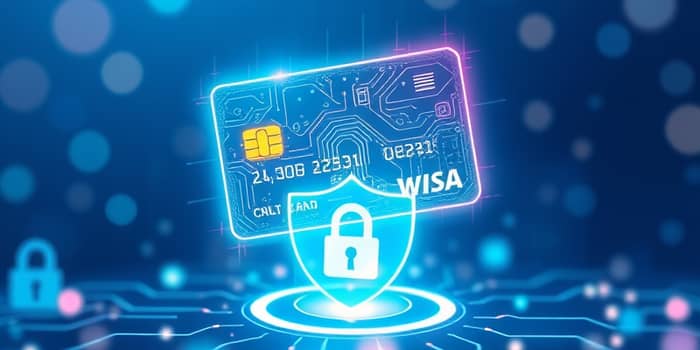As online shopping and digital subscriptions become integral parts of our daily lives, safeguarding financial information is more critical than ever. Innovative tools like virtual cards are reshaping the landscape of payment security, offering users a robust shield against fraud and data breaches.
Understanding Virtual Cards
Virtual cards are digital equivalents of credit or debit cards that generate unique, temporary credentials for each use. They tie back to your primary account but ensure that your real card details remain hidden during transactions.
When you request a card via your bank or fintech app, the system creates unique temporary card number, expiration date, and security code. This method prevents thieves from accessing your permanent details if a merchant’s database is compromised.
Common types of virtual cards include:
- Single-use cards, valid for one purchase before expiring.
- Merchant-locked cards, restricted to a specific retailer.
- Multi-use cards with set spending caps and custom expiry dates.
Core Security Benefits of Virtual Cards
One of the standout advantages is that masked card data is never exposed to merchants or potential eavesdroppers. Each transaction uses a fresh number, making stolen information obsolete almost instantly.
Users have the flexibility to set customizable spending limits and merchant locks, reducing the fallout of any unauthorized activity. Plus, compliance with PCI DSS regulations and industry standards ensures these cards meet rigorous security requirements.
Because virtual cards offer instant issuance and deactivation capabilities, you can create or cancel them in seconds—no waiting for physical replacements or enduring account disruptions.
With detailed transaction controls for maximum safety, cardholders can monitor spending in real time and adjust parameters to align with budgets or subscription plans.
Fraud Prevention: Reducing Online Payment Risks
The growing threat of card-not-present (CNP) fraud has driven the adoption of virtual cards as a frontline defense. Traditional card numbers, once stolen, can be reused repeatedly; virtual cards eliminate this vulnerability.
By instantly disabling compromised numbers, virtual cards dramatically lowers risk of fraud. Merchant locking further ensures that even if data is stolen, the card number cannot be exploited elsewhere.
Private, secure transactions become the norm as your permanent card details never leave the issuer’s secure environment, preserving the confidentiality of sensitive purchases and subscriptions.
Comparing Virtual Cards with Traditional Physical Cards
Physical credit and debit cards have served us well for decades, but their static nature makes them prime targets for data thieves. Virtual cards introduce a dynamic layer of protection. The following comparison highlights key distinctions:
Use Cases for Businesses and Individuals
Organizations and consumers alike are leveraging virtual cards for enhanced oversight and peace of mind. Businesses can issue separate cards for teams, set granular budgets, and track real-time spending to streamline accounting processes.
- For businesses: issue separate cards to track departmental spending.
- For consumers: generate a new card for every online merchant.
- For freelancers: manage project expenses with tailored limits and expiration.
Limitations and Complementary Security Tips
While virtual cards significantly boost protection, certain limitations remain. Not all merchants accept them for recurring payments or refunds, and active numbers still require monitoring.
- Always deactivate cards immediately if suspicious activity arises.
- Use secure networks and avoid public Wi-Fi for transactions.
- Pair virtual cards with a reliable password manager and strong authentication.
- Use digital wallets when virtual card acceptance is limited.
Embracing the Future of Digital Payments
As e-commerce and subscription services proliferate, robust solutions are essential to protect users’ finances. Virtual cards provide control over every transaction, empowering individuals with confidence and resilience against evolving threats.
By integrating virtual cards into your financial toolkit, you not only safeguard your primary account but also contribute to a broader movement prioritizing consumer security. Upcoming innovations—like biometric authentication and AI-driven monitoring—promise to refine these shields even further.
Conclusion
Digital security is no longer optional—it is essential. Virtual cards offer a sophisticated, user-friendly way to shield your finances from the ever-evolving threats of the online world. By understanding their functionality, leveraging their security benefits, and integrating complementary practices, you can enjoy a safer, more confident online purchasing experience.
In a landscape where data breaches and fraud attempts are becoming more frequent, virtual cards stand out as a practical and powerful tool. Embrace this technology today to keep your money safe tomorrow.
References
- https://www.paywithextend.com/resource/how-virtual-credit-cards-enhance-security-and-control
- https://epayspace.com/en/blog-en/the-benefits-of-virtual-cards-for-online-transaction-security/
- https://www.nmb-t.com/resources/blog-post/how-virtual-cards-protect-business-from-fraud
- https://www.airwallex.com/us/blog/virtual-cards-benefits-and-disadvantages
- https://www.corpay.com/resources/blog/virtual-card
- https://www.jpmorgan.com/insights/payments/commercial-cards/what-is-a-virtual-credit-card-and-how-does-it-work
- https://www.cnet.com/personal-finance/credit-cards/fraud-proof-your-online-purchases-why-virtual-cards-are-your-new-best-friend/
- https://ramp.com/blog/are-virtual-credit-cards-safe










